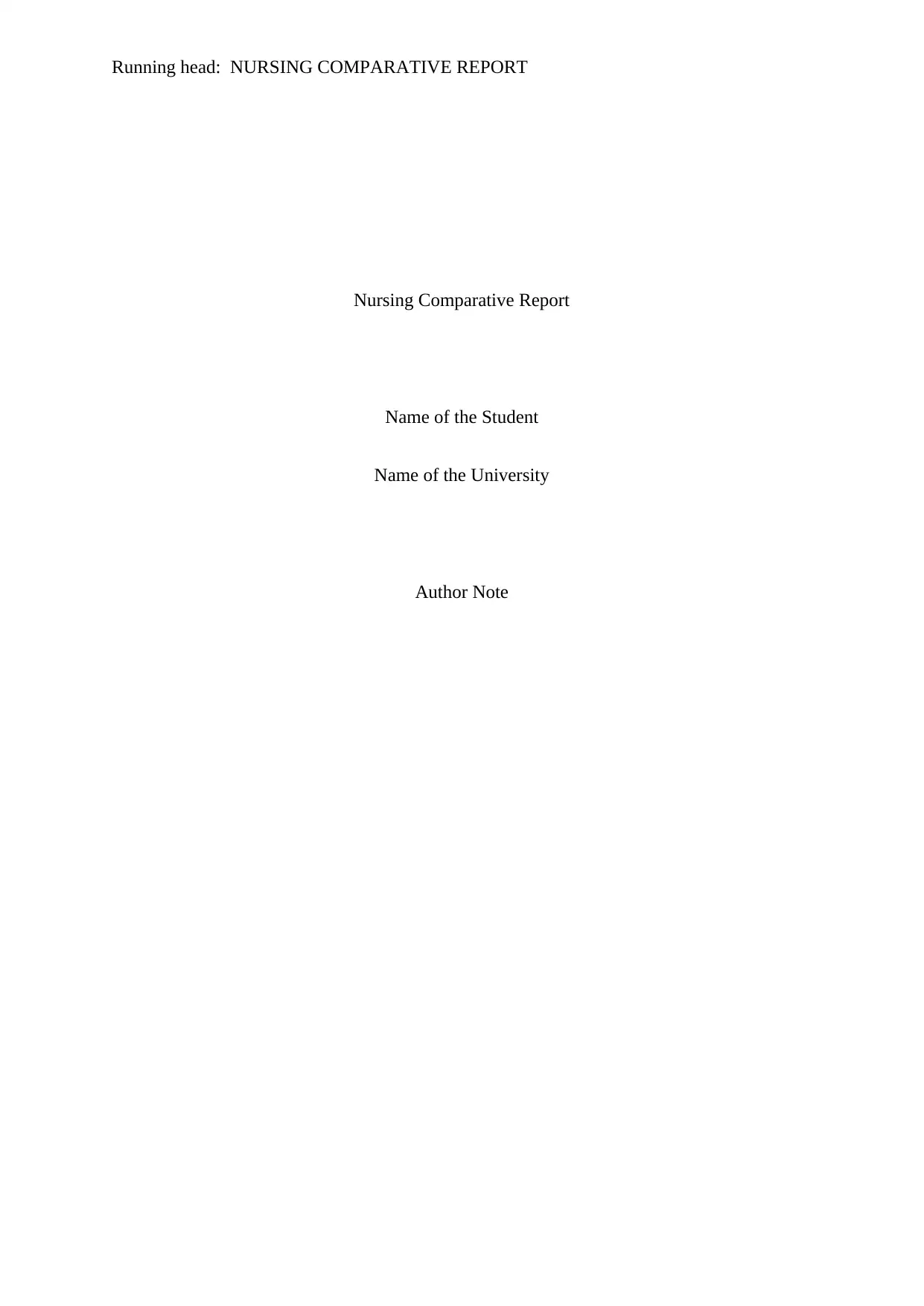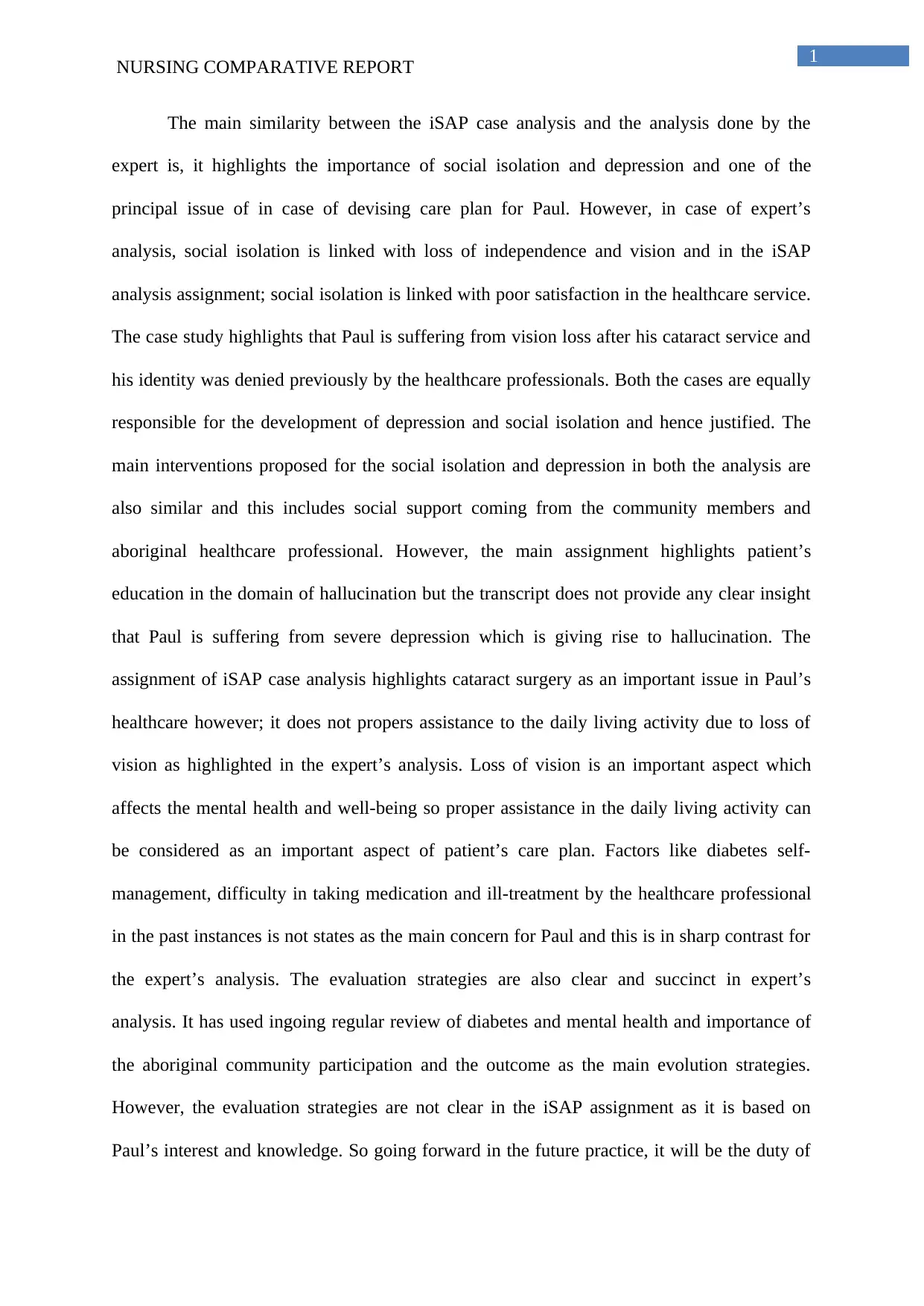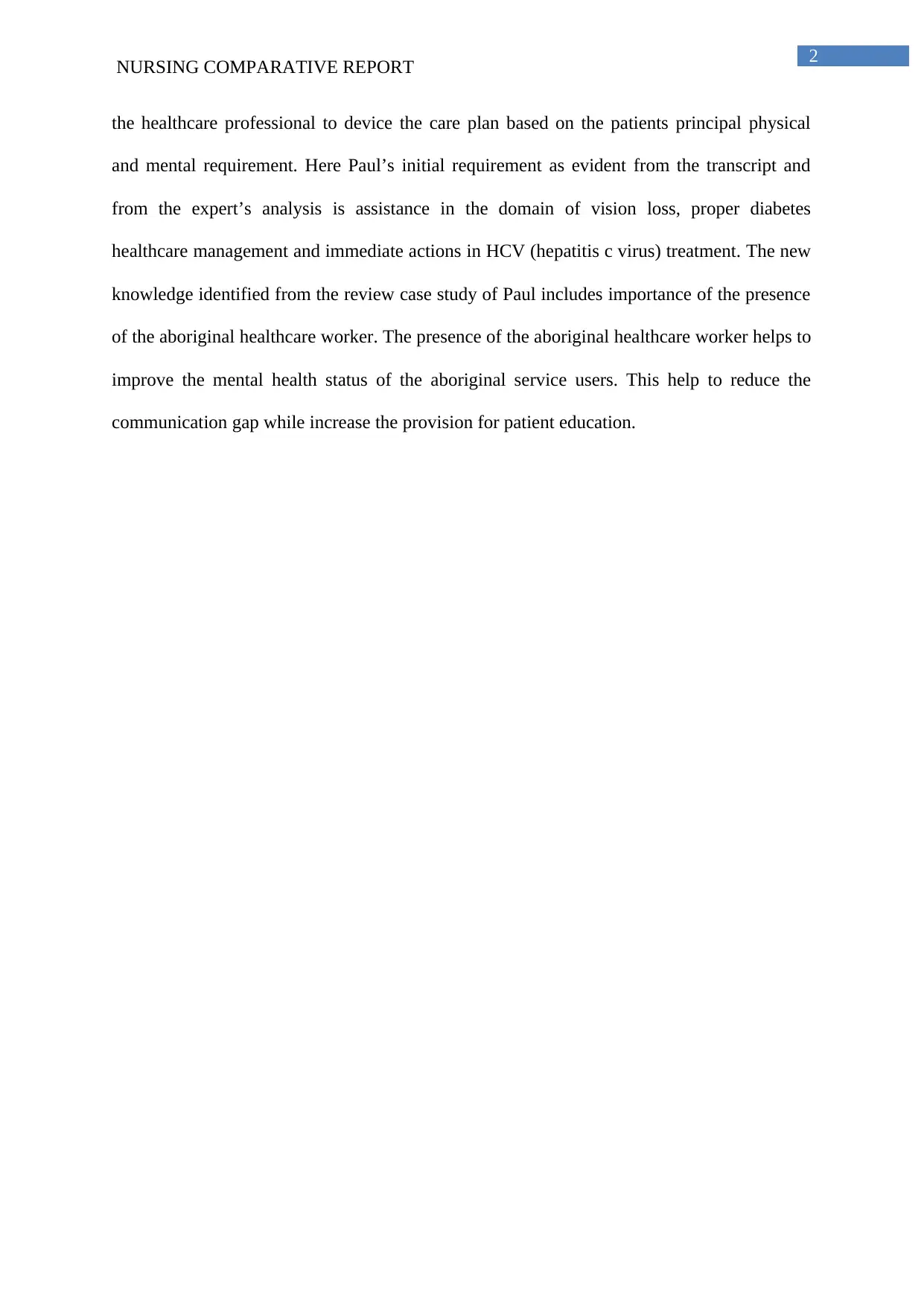NURS3005: iSAP Case Study - A Detailed Comparative Analysis Report
VerifiedAdded on 2023/06/07
|3
|540
|158
Report
AI Summary
This report presents a comparative analysis between a student's iSAP case analysis and an expert's analysis of Paul's healthcare needs. It highlights similarities in identifying social isolation and depression as key issues but notes differences in their causes and proposed interventions. The expert's analysis emphasizes vision loss and diabetes self-management, while the student's analysis focuses on cataract surgery and hallucination (though unsupported by the transcript). The report concludes by stressing the importance of considering a patient's physical and mental requirements, particularly the presence of aboriginal healthcare workers, for effective care planning. Desklib offers a variety of similar documents and study tools for students.
1 out of 3










![[object Object]](/_next/static/media/star-bottom.7253800d.svg)